Introduction
The landscape of land acquisition is evolving rapidly, driven by a multitude of challenges and innovative solutions that seek to harmonize development with community needs and environmental sustainability. Traditional methods of land acquisition are increasingly scrutinized for their inefficiencies, lengthy negotiations, and the complexities of navigating legal frameworks. These hurdles often lead to delays and heightened costs, prompting the need for more effective strategies that prioritize stakeholder engagement and collaborative approaches.
Innovative practices, including community-based participatory planning and alternative dispute resolution, are gaining traction, emphasizing the importance of inclusive decision-making. Additionally, the integration of advanced technologies such as Geographic Information Systems (GIS) and artificial intelligence is revolutionizing how land acquisition professionals operate, enhancing efficiency and precision. As the article explores these dynamics, it underscores the significance of community engagement, the role of specialists in managing relationships with landowners, and the critical need for collaboration among diverse stakeholders to ensure successful and sustainable land acquisition outcomes.
Challenges in Traditional Land Acquisition Methods
Conventional property acquisition techniques are increasingly confronted by a multitude of factors that can considerably postpone project schedules and raise expenses. Lengthy negotiation processes often lead to frustration among stakeholders, compounding issues when landowners oppose development initiatives. Additionally, navigating the intricate web of legal regulations can be daunting, as these legal hurdles often require extensive documentation and compliance efforts, which can vary widely by jurisdiction.
'The absence of reliable, updated geographic information further complicates these processes.'. For instance, outdated records can mislead stakeholders about property availability and ownership, resulting in wasted time and resources. This issue is particularly pronounced in regions where land databases are not digitized or accessible, limiting effective decision-making.
Furthermore, stakeholder resistance frequently arises from legitimate worries about environmental effects and disruption to local populations. Interacting with local groups and addressing their concerns is essential for promoting collaboration and ensuring project sustainability. This sentiment is echoed by Richard Sliuzas from the University of Twente, who emphasizes the importance of inclusive territory governance in building climate resilience, highlighting the need for collaborative approaches that integrate local insights and experiences.
A poignant example is the case of the Bruce family, who faced eminent domain issues that stemmed from local opposition and legal conflicts. 'Such historical precedents serve as reminders of the delicate balance required between development and community rights, underscoring the necessity for property procurement professionals to employ thoughtful strategies that mitigate conflicts.'.
Furthermore, the rise of open data presents both opportunities and challenges in property acquisition. 'While open data can enhance property administration systems and facilitate better decision-making, it also risks exacerbating existing inequalities if not managed equitably.'. For instance, in Bangalore, India, the digitization of property records has disproportionately benefited wealthier individuals, highlighting the potential for a 'data divide' that can further marginalize vulnerable populations.
'Navigating these complexities requires a firm understanding of both the legal landscape and the socio-economic dynamics at play, making it imperative for property procurement professionals to develop strong negotiation skills and foster transparent communication with all stakeholders.'.
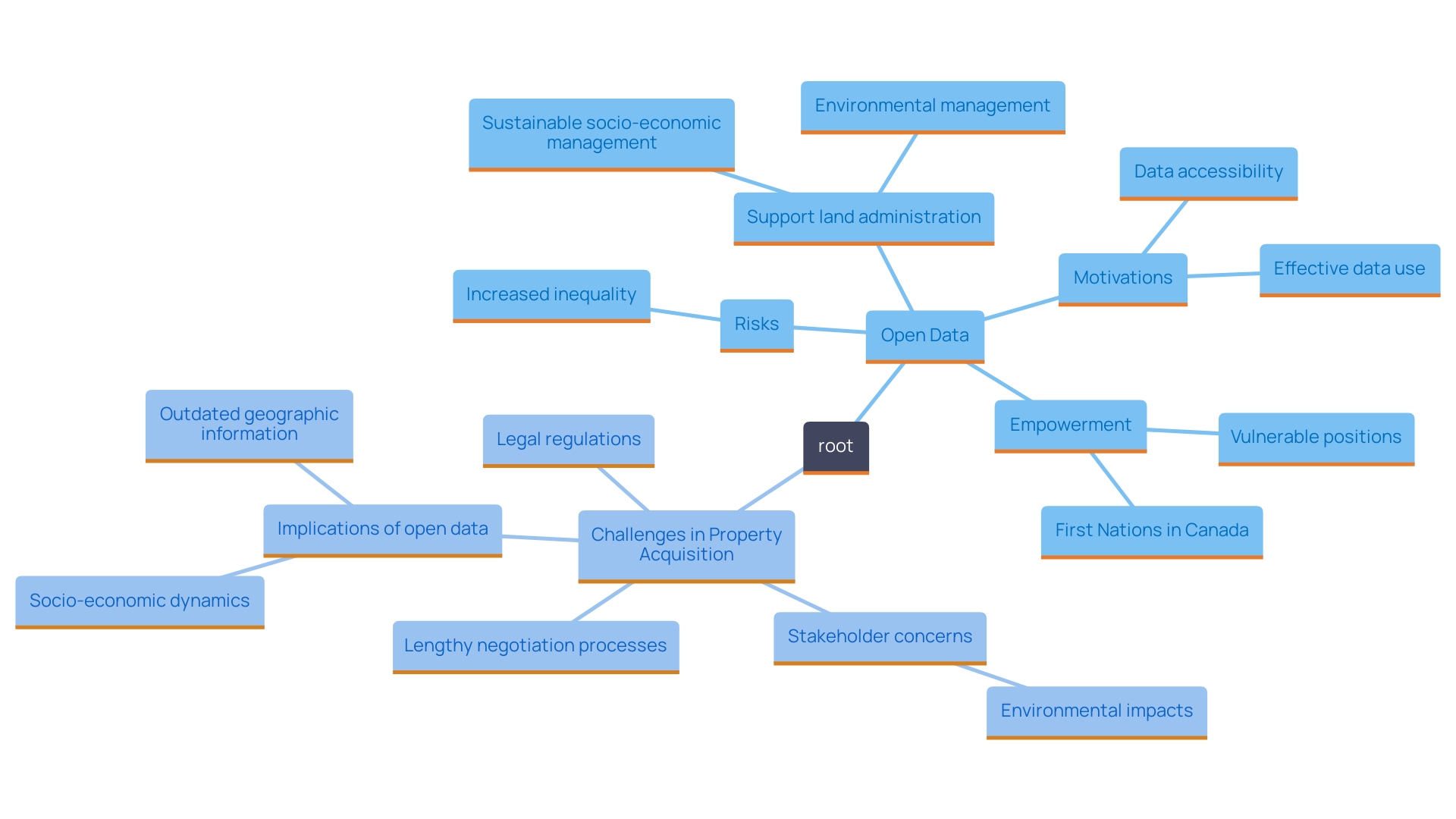
Innovative Approaches to Land Acquisition
'Creative approaches in property procurement are increasingly acknowledged as vital for tackling the challenges typically faced in the sector.'. Community-based participatory planning stands out as an effective method, as it actively engages stakeholders from the outset, fostering an environment of trust and collaboration. 'This inclusive approach not only enhances communication but also aids in grasping the diverse needs and concerns of the community, which is crucial for fair access to resources.'.
Alternative dispute resolution (ADR) methods further streamline the negotiation process, significantly reducing conflicts and expediting agreements. By prioritizing dialogue and mediation over adversarial tactics, ADR techniques can lead to solutions that are satisfactory to all parties involved, maintaining essential relationships and minimizing disruptions.
Additionally, adaptable acquisition strategies—such as property exchanges and conservation easements—provide creative avenues to improve project feasibility. These options not only tackle shortages of territory but also correspond with sustainable usage practices, leading to improved environmental results. "As the AREA-at-scale program emphasizes, such approaches are essential for guaranteeing equitable and just tenure security while minimizing disputes over usage.".
The interrelation between territory management and climate resilience is another essential element in property procurement strategies. With climate change acknowledged as a pressing global challenge, incorporating climate considerations into property acquisition processes is increasingly important. It enables projects to adapt to environmental changes while ensuring the sustainable management of resources. 'The focus on enhancing tenure security and improving resource use planning can strengthen the climate resilience of communities, as supported by findings from the LAND-at-scale program.'. This comprehensive method not only meets urgent property procurement requirements but also aids in long-term viability and diminished rivalry over resource availability.
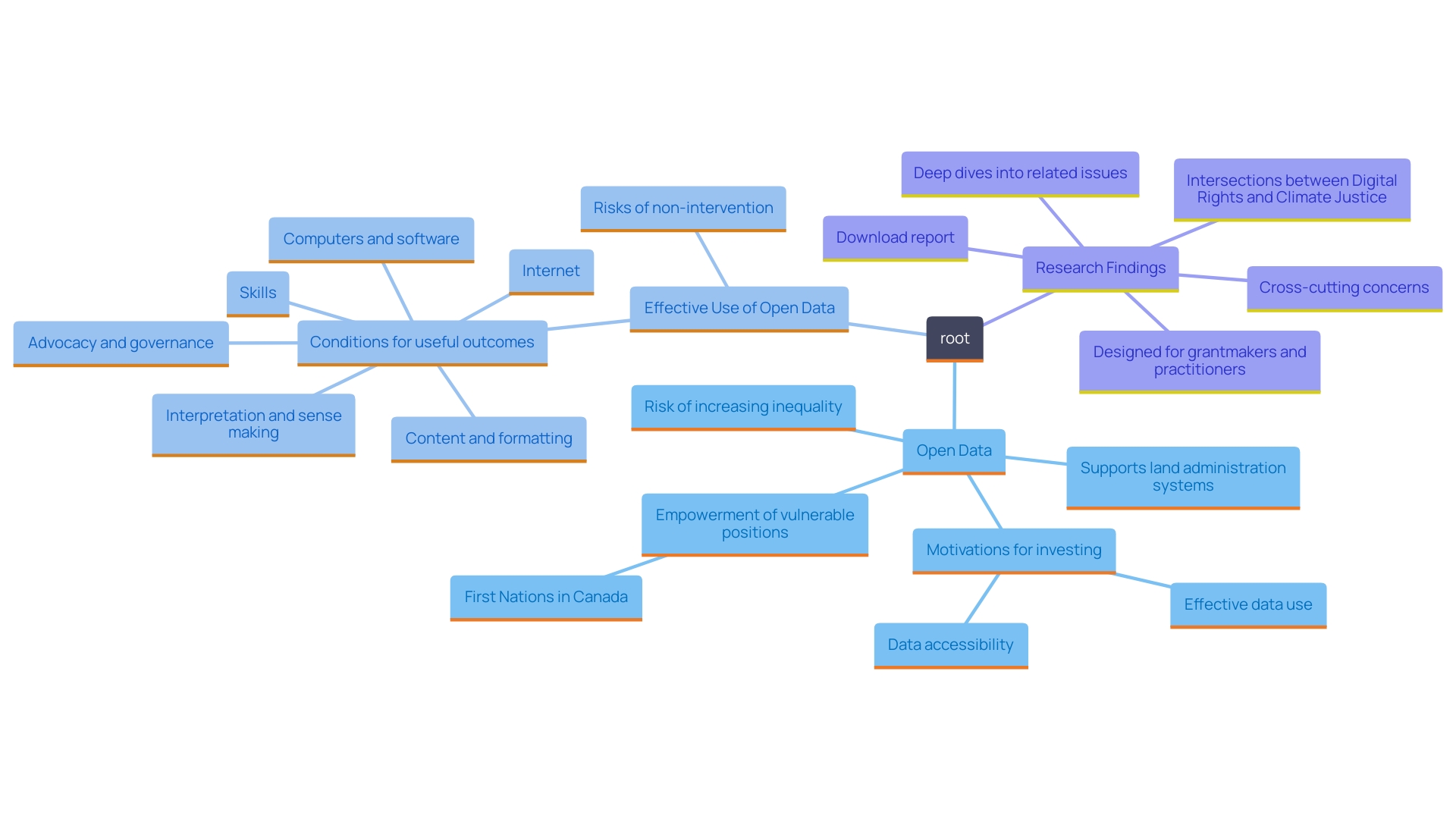
Leveraging Technology for Efficient Land Acquisition
'The integration of advanced technologies into property procurement processes has significantly improved both efficiency and precision.'. Geographic Information Systems (GIS) serve as vital tools, offering comprehensive data for site selection and strategic planning. This technology enables stakeholders to make informed choices by visualizing geographic information, which is crucial for identifying the most appropriate area for development initiatives.
Artificial Intelligence (AI)-driven applications further streamline the complexities associated with title research and documentation. By automating these processes, AI reduces the time needed to secure property rights, which is a critical aspect of obtaining territory. This not only speeds up timelines but also reduces the potential for human error, ensuring higher accuracy in documentation and compliance.
Furthermore, these technological advancements enable property development experts to oversee projects more efficiently. For instance, as emphasized in recent developments, platforms that gather sales data, property valuation, and mapping tools are influencing the future of real estate. Firms such as Acres are utilizing this information to offer unparalleled insights, aiding improved decision-making for property procurement specialists.
Furthermore, geospatial tools created by research organizations, like those that examine environmental elements impacting public health, are essential for urban planners and property procurement specialists. These tools enable a deeper understanding of how environmental factors influence the use of territory, thereby fostering sustainable urban development.
The impact of these technologies is profound; they not only optimize operational efficiency but also enhance the ability to respond to challenges swiftly. As the terrain of property procurement continues to change, adopting these progressions will be crucial for remaining competitive and making sure that development initiatives correspond with both regulatory standards and community requirements.
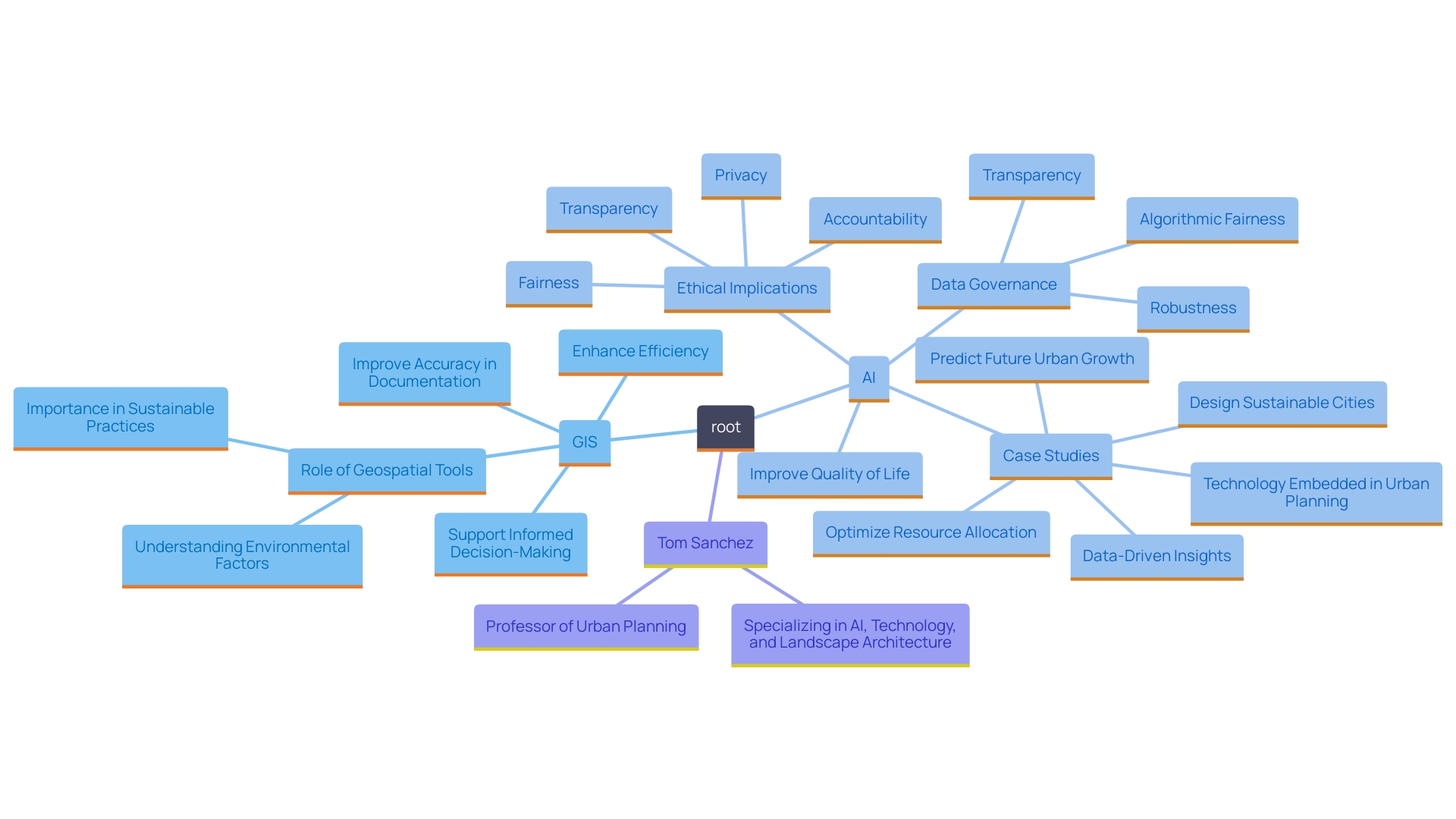
Compliance with Legal and Regulatory Requirements
'Legal and regulatory compliance stands as a fundamental pillar in the process of property acquisition.'. Professionals in this field must adeptly navigate a multifaceted environment comprising local, state, and federal regulations, which can often be intricate and evolving. A strong comprehension of zoning regulations, environmental evaluations, and usage policies is crucial to reduce the risk of legal challenges.
For instance, the National Environmental Policy Act (NEPA) and its state counterparts can introduce significant delays into development efforts, often extending timelines by two to six years due to the exhaustive compliance requirements. This situation underscores the importance of thorough preparation and strategic planning to ensure that all necessary permits are secured efficiently.
Moreover, the landscape is further complicated by the growing demand for renewable energy, which has led to a shift in siting and permitting policies across the United States. A report co-authored by experts from leading institutions highlights the diverse clean energy siting policies that developers must navigate. As public sentiment increasingly leans towards lower-emission energy sources, it is essential for land acquisition specialists to remain informed about regulatory updates and new best practices to ensure their activities conform to legal standards.
Furthermore, when entering into development agreements, a vital tool for managing regulatory complexities, striking a balance between public benefits and private interests becomes essential. Such agreements not only define the terms of development but also facilitate smoother interactions with local governments, ultimately promoting the feasibility of the initiative. As mentioned by industry specialists, effective interaction with regulatory authorities can significantly expedite timelines while addressing local issues.
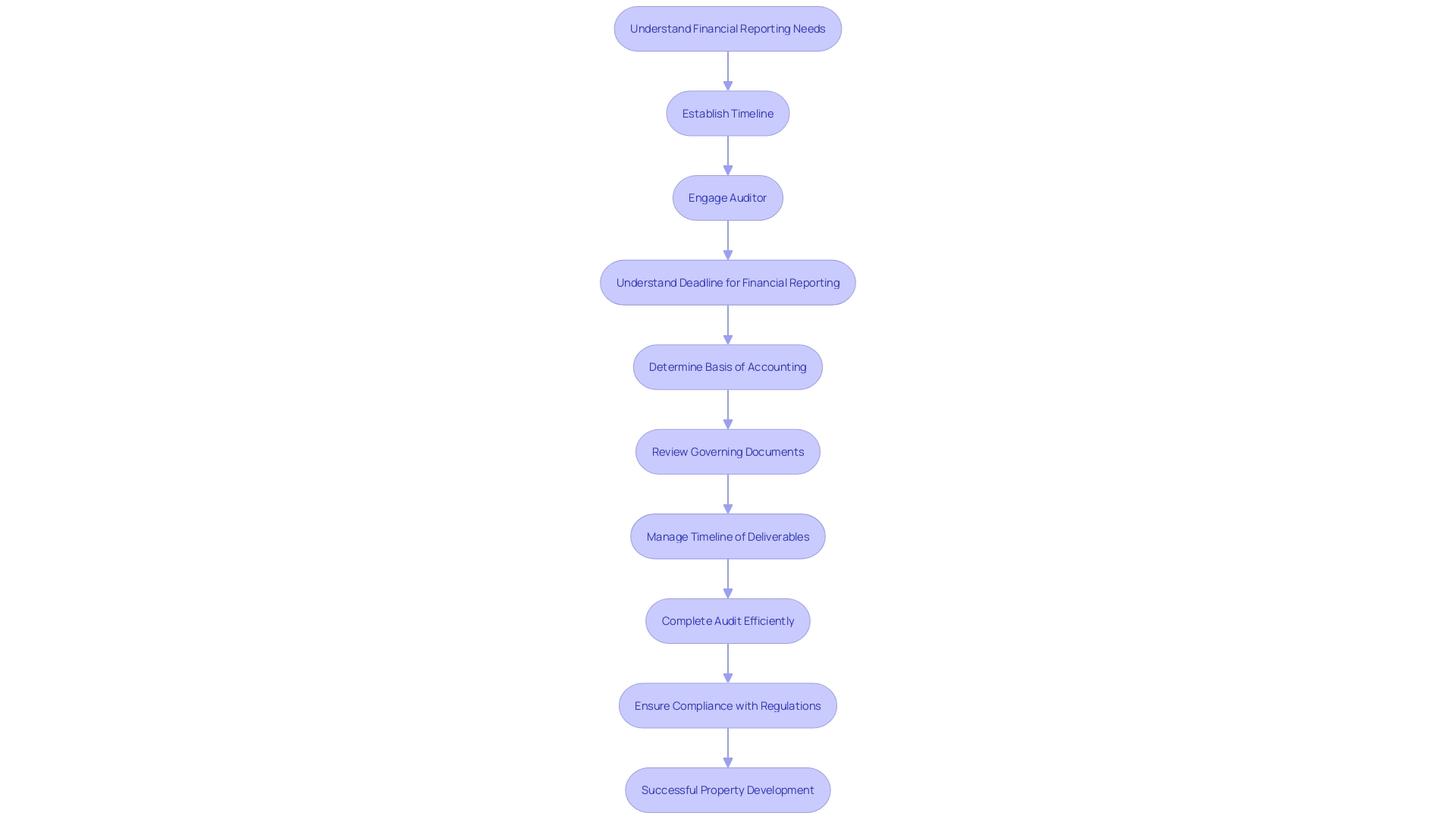
The Importance of Community Engagement
'Community involvement plays a crucial role in the property acquisition process, significantly improving relationships between developers and local stakeholders.'. Timely participation of the public not only aids in addressing concerns but also promotes the gathering of valuable feedback, ultimately resulting in more sustainable and broadly accepted land use solutions.
Effective communication strategies are essential in this context. Public gatherings and outreach initiatives act as essential venues for building trust and securing local backing throughout the initiative's duration. Research indicates that successful engagement with the public can be achieved through a structured approach, which includes three key steps: stakeholder identification, stakeholder mapping, and stakeholder involvement. This structure allows team leaders to comprehend social dynamics more effectively and customize their engagement approaches accordingly.
For example, in the SEI initiative centered on urbanization in Khon Kaen, Thailand, comprehensive interviews were carried out with a varied group of stakeholders, including local leaders and informal workers. The insights gathered emphasized the importance of aligning urban development goals with the aspirations and needs of local populations. Such participatory approaches not only enhance project acceptance but also contribute to the long-term resilience of populations.
Moreover, considering the unique cultures and values of local and Indigenous Peoples is crucial, especially in contexts like Arctic development. Here, group listening studies have proven effective in soliciting participation and fostering mutual understanding, thereby enhancing cooperation between developers and local residents.
In summary, prioritizing community engagement through effective communication and organized stakeholder involvement not only reduces conflicts but also enhances the development process, ensuring that property procurement efforts are both fair and sustainable.
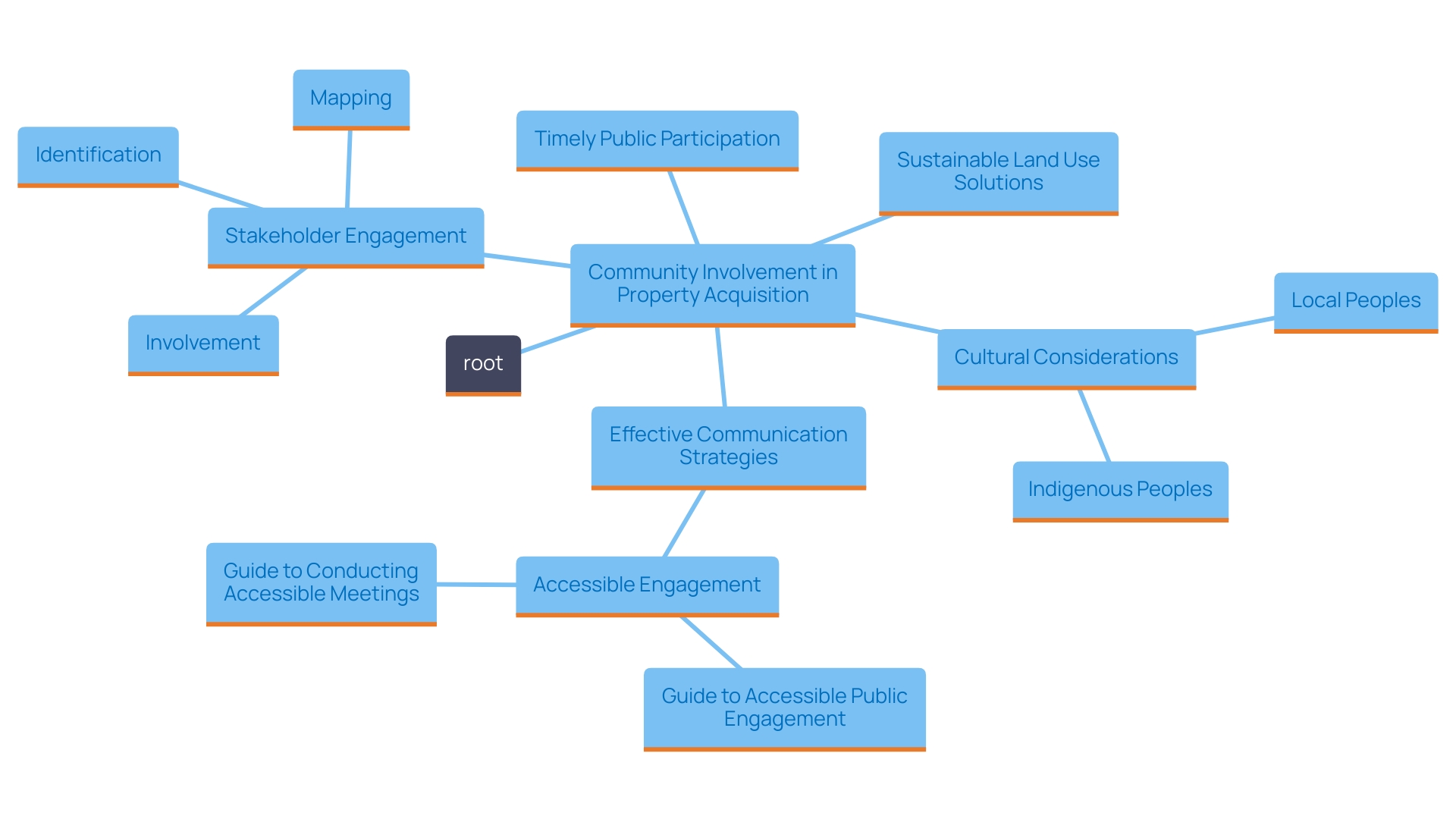
The Role of Specialists in Managing Landowner Relationships
Land procurement specialists play a crucial role in fostering positive relationships with landowners, serving as essential intermediaries in the negotiation process. Their effectiveness hinges on the ability to communicate openly, demonstrating both cultural sensitivity and empathy. This method is not only advantageous; it frequently reduces concerns that property owners may possess about the possible effects of usage.
Successful negotiations are frequently built on trust and mutual understanding. By actively listening to landowners’ concerns and aspirations, specialists can tailor their strategies to address specific needs, which leads to smoother negotiations and increases the likelihood of reaching favorable agreements. For example, a case study in Japan illustrates the importance of this personalized approach. Clients engaging in Akiya purchases expressed a desire for transparency and clarity about the process. By holding open discussions and providing comprehensive information, the consultants were able to build rapport and effectively manage expectations.
This rapport not only streamlines negotiations but can also transform potentially contentious discussions into collaborative problem-solving sessions. As Secretary-General Ban Ki-moon noted, understanding the emotional dynamics of negotiation is essential for both personal and professional growth. Experts who can navigate these emotional landscapes often find themselves better equipped to tackle the complexities of property acquisition.
Furthermore, the Land Portal Foundation emphasizes the critical need for fair access to property information. Their mission emphasizes that a well-informed property governance ecosystem is essential for securing rights to territory, particularly for vulnerable populations. By ensuring that diverse viewpoints are represented and accessible, property professionals can significantly enhance their negotiation results, ultimately benefiting all parties involved.
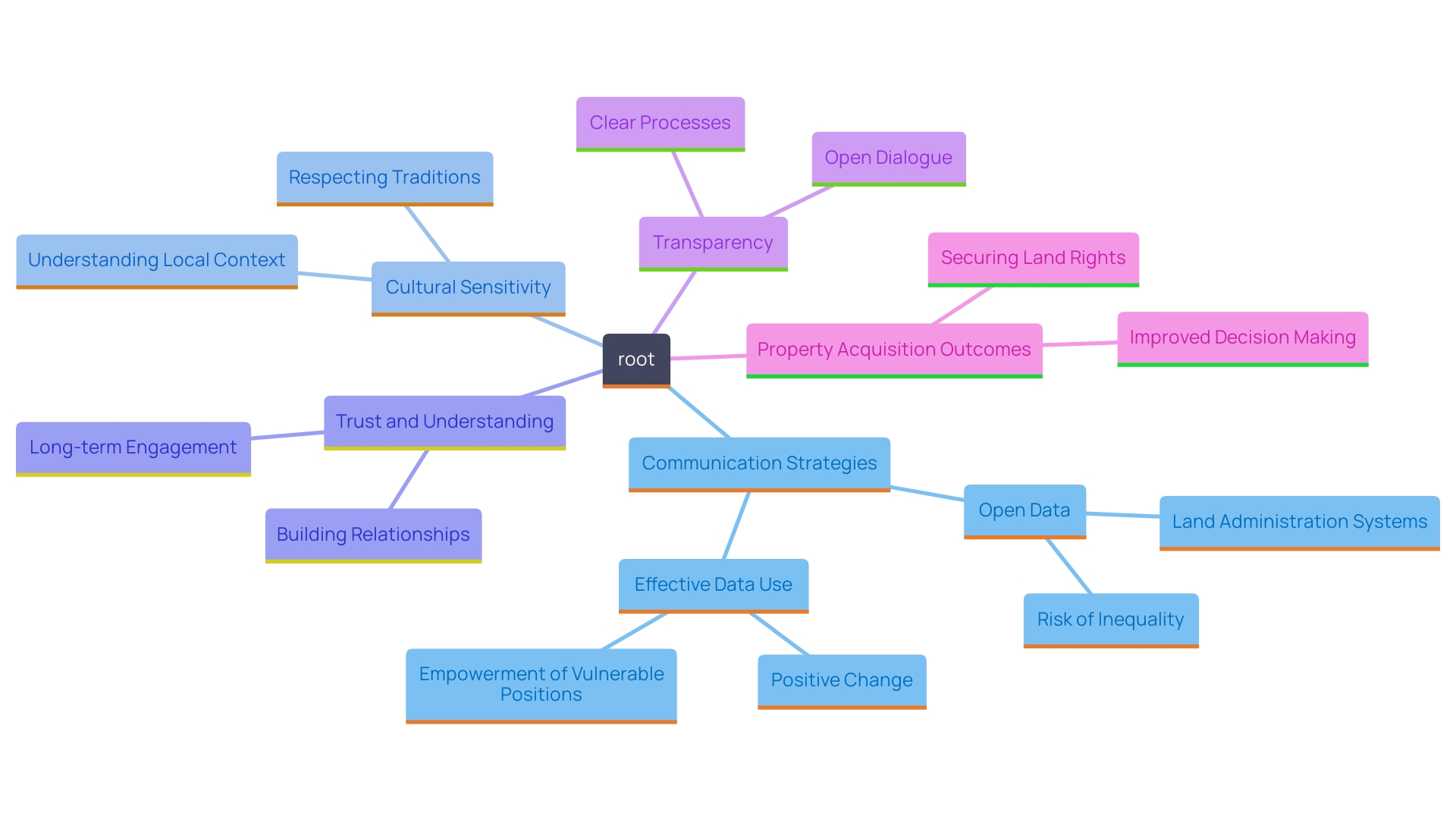
Collaboration with Stakeholders for Project Success
Successful teamwork with a varied group of participants—including government bodies, local organizations, and environmental groups—is crucial for the success of property procurement initiatives. Land acquisition experts must navigate and harmonize differing interests to ensure that objectives align with both societal values and regulatory mandates. This collaboration often involves building coalitions and fostering open dialogues, which can help mitigate potential conflicts and promote a more inclusive approach to property development.
For instance, recent initiatives working with Native Nations in the western United States have exemplified this approach. By involving Tribal leaders and local residents in conversations about future energy development on reservation territories, these initiatives have emphasized the requirements and viewpoints of Native populations, shifting away from exploitative research practices. Through interviews with the Southern Ute Indian Tribe and ongoing engagement with additional Native Nations, the process has yielded a rich understanding of how these communities envision their energy futures.
Moreover, translating qualitative insights into quantitative data has proven beneficial for illustrating how various energy development pathways may impact future production and revenue for these tribes. This dual approach not only respects the voices of the stakeholders but also provides a robust framework for informed decision-making.
As Richard Sliuzas from the University of Twente pointed out during a recent webinar on territory management and climate resilience, the inclusion of various stakeholder viewpoints is essential. He highlighted that successful initiatives often emerge from platforms that promote knowledge sharing and collaborative learning among local authorities, funders, practitioners, and scholars. Such efforts play a crucial role in the ongoing discussion surrounding resource management, ensuring that initiatives are grounded in local needs and environmental factors.
In summary, a strategic focus on collaboration, informed by the voices of the community and guided by comprehensive data analysis, can not only reduce conflicts but also lead to sustainable land development that honors both cultural values and ecological integrity.
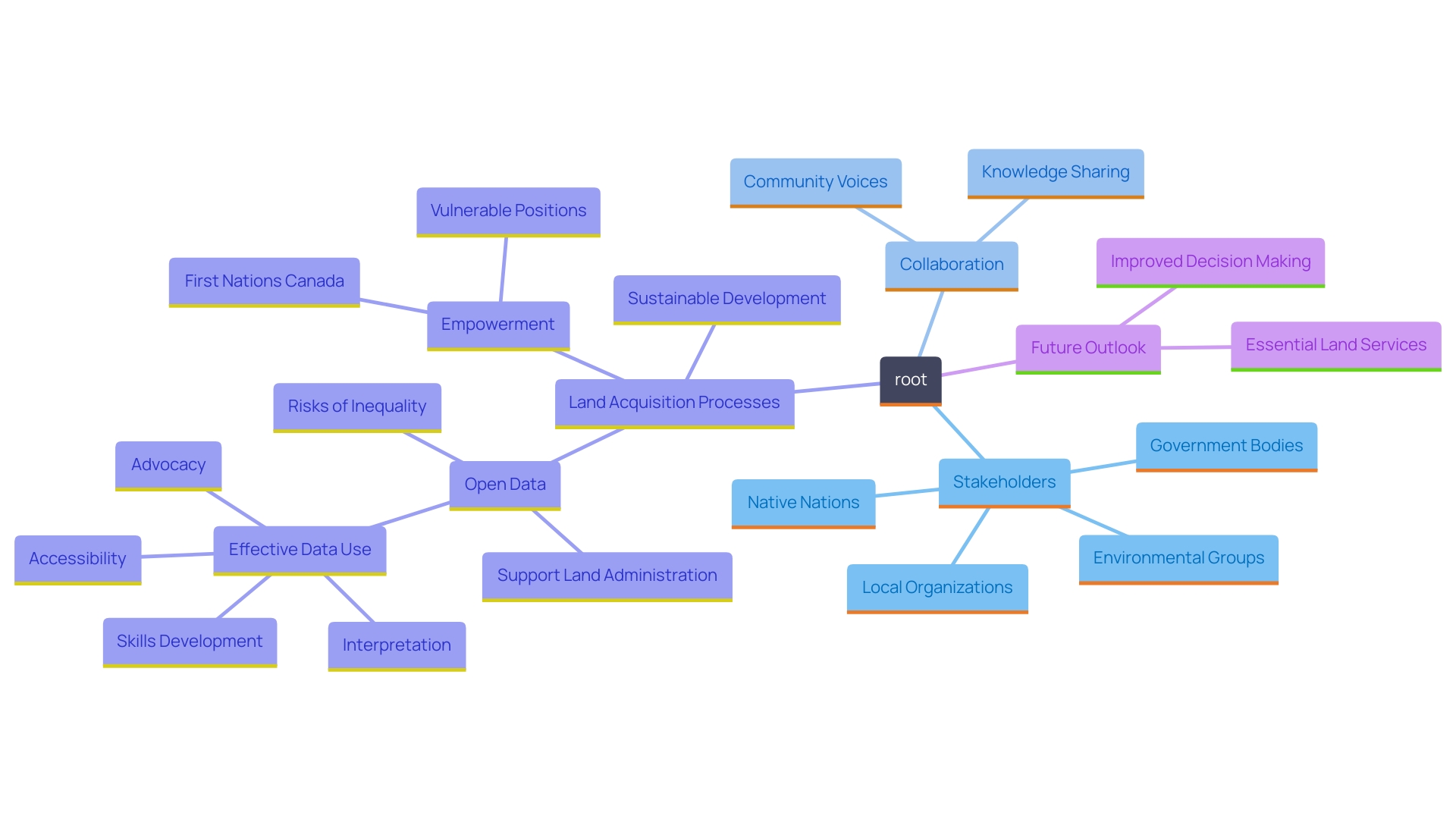
Conclusion
The landscape of land acquisition is undergoing significant transformation, driven by the need for more effective and inclusive strategies. Traditional methods are increasingly criticized for their inefficiencies and the complexities involved in legal compliance, which often lead to prolonged processes and heightened costs. The importance of community engagement emerges as a central theme, illustrating how early and meaningful involvement of local stakeholders can mitigate conflicts and foster cooperation.
This collaborative approach is essential for addressing community concerns and ensuring that development initiatives align with local values.
Innovative strategies, such as community-based participatory planning and alternative dispute resolution, have shown promise in streamlining negotiations and enhancing stakeholder relationships. The integration of advanced technologies like Geographic Information Systems (GIS) and artificial intelligence further enhances operational efficiency, allowing for more informed decision-making. These tools empower land acquisition professionals to navigate complexities more adeptly and respond to challenges with greater agility.
Moreover, the emphasis on compliance with legal and regulatory frameworks remains paramount. As stakeholders must navigate an intricate web of laws and policies, understanding the evolving regulatory landscape is crucial for successful project execution. Effective collaboration with various stakeholders, including government agencies and community groups, is essential to harmonize differing interests and ensure that land acquisition efforts are equitable and sustainable.
In summary, the future of land acquisition lies in adopting innovative, inclusive, and technology-driven approaches that prioritize community engagement and regulatory compliance. By fostering collaboration among diverse stakeholders and leveraging advanced tools, land acquisition professionals can navigate challenges more effectively, contributing to sustainable development outcomes that respect both community needs and environmental integrity.




